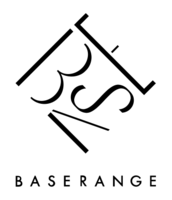Sizing chart
Measurements
- cm
- inch
Conversion Chart
| Size | EU | US | AU | JP |
|---|---|---|---|---|
XS |
34 |
0-2 |
8 |
100 |
S |
36 |
4 |
10 |
120 |
M |
38 |
6 |
12 |
140 |
L |
40-41 |
8 |
14-16 |
160 |
XL |
42 |
10 |
16-18 |
180 |
Close button on footer ?
Omato 3/4 tee shirt - organic cotton rib - bow blue / hen yellow - organic-cotton
Regular price
$145.00
Color
Bow blue / hen yellow
Bow blue / hen yellow
Alamillo brown
My red
Black
Hen yellow
Off white
- XL
Product Details
Organic cotton rib ¾ length sleeve tee
Boatneck
Exposed seams
Lettuce edge at neckline and hems
Runs small, consider sizing up
91% Organic Cotton 9% Elastane
Made in Portugal
Model wears size S and is 165cm
Material
Organic cotton
Origin: Brazil, India, Egypt
Certificates: GOTS, Oeko-Tex, OCS 100
- Cotton is a natural seed fiber.
- Cotton is the most common natural material used today in garment production. It is durable, breathable, absorbent, and soft. Cotton is ideal for dyeing and printing. The material is also biodegradable and hypoallergenic.
- Conventional cotton generally has a high environmental impact. It requires a vast amount of water and depletes the soil. To increase production, harmful pesticides, and fertilizers are used, polluting the grounds and waters.
- Baserange only sources organic cotton, as we want to ensure that no harmful chemicals are used in the entire production process, water consumption is controlled and workers' rights are also preserved.
- Organic cotton promotes and enhances biodiversity and biological cycles and is beneficial to human health and the environment. Even though the properties of organic cotton fiber are not as good as regular cotton fiber, the production of organic cotton is growing.
- There is also a lot of cotton that is certified organic, that may not actually be organic, as it is mixed with conventional cotton. This is because the demand for organic cotton is big, but it grows much slower than conventional cotton and droughts are becoming more common.
You may also like








